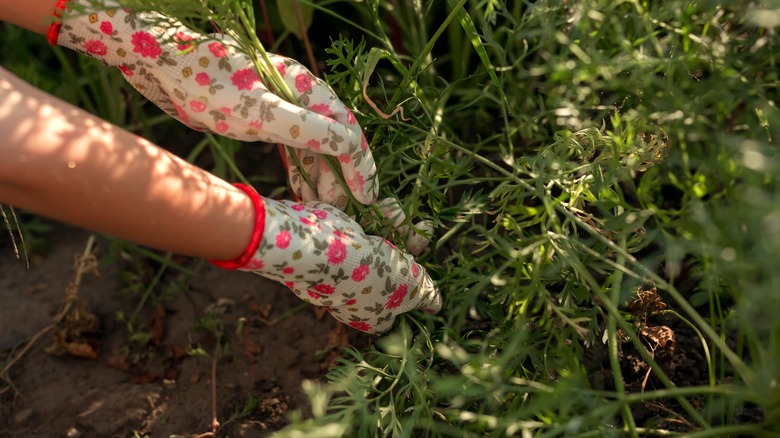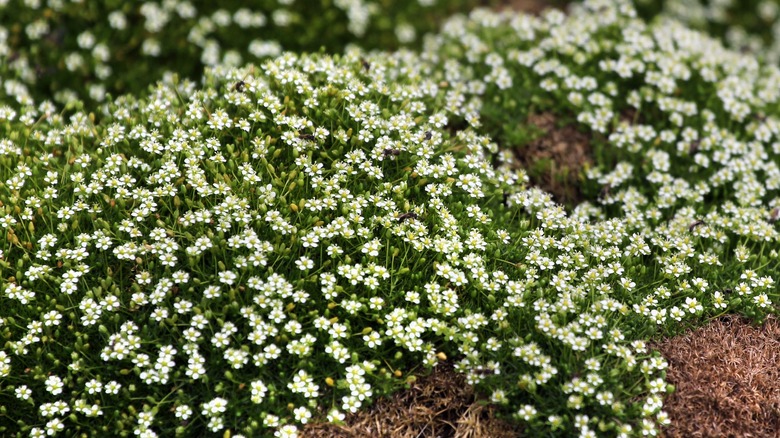Crowd Out Pesky Weeds By Growing A Moss-Like Ground Cover
Who doesn't love the look of a soft carpet of moss? In the right location, moss can even be a better lawn option than grass. Of course, there are downsides to using mosses (plants in the phylum Bryophyta) as ground covers or lawn alternatives, including their preference for full shade locations and compact soil, which often aren't ideal for many other plants. Additionally, mosses don't handle foot traffic well, making them a poor option for any areas that are likely to be walked on by people or pets. You don't have to grow true mosses to achieve the soft and magical look they are associated with though. Irish moss (Sagina subulata) is a perfect ground cover option for anyone looking for a dreamlike mossy aesthetic without the downsides and limitations that come with true mosses.
Despite its appearance, Irish moss isn't a true moss and is actually more closely related to carnations. Native to Europe, this low growing plant can thrive in USDA zones 4 through 8. Unlike true moss, which generally requires deep shade to grow its best, Irish moss flourishes in full to part sun. Even better, it can handle light foot traffic and during spring, it even grows adorable and fragrant little flowers.
Growing and caring for Irish moss ground cover
Irish moss is an excellent ground cover option for growing either as a lawn alternative or for using as a living mulch in your landscape. It's widely available for sale, whether you opt to grow it from seed or purchase it as a young plant. It can also be propagated from divisions if you have any friends growing it in their yards. Since Irish moss, like many perennials, grows at only a moderate rate, it can take some time to fill and create a lush and full effect, but with some patience and care, it can eventually fill in enough to crowd out weeds.
While you're waiting for your Irish moss to fill in, you can suppress weeds and attract pollinators by using annuals as a living mulch. As annuals only last a season, you won't have to worry about moving them once your Irish moss has finally begun to spread out. To help your Irish moss grow its best, be sure to grow it in moist but not overly wet soil and don't go overboard on fertilizing, as that can prevent it from spreading into a dense carpet. You may also want to consider incorporating Scotch moss with your Irish moss for some color variation, as Scotch moss (Sagina subulata 'Aurea') has a more chartreuse tone, in contrast to Irish moss' emerald green.

